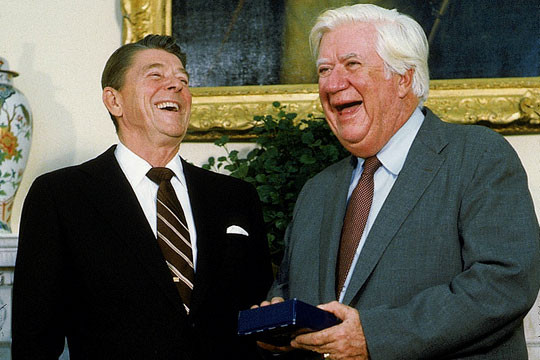Archive for June, 2011
Pushing on Engineering
 With manufacturing change is easy – lean this, six sigma that, more with less year-on-year. With engineering, not so much. Why?
With manufacturing change is easy – lean this, six sigma that, more with less year-on-year. With engineering, not so much. Why?
Manufacturing is about cost, waste, efficiency, and yield (how to make it), and engineering is about function (what it does) – fundamental differences but not the why. The consequence of failure is the why. If manufacturing doesn’t deliver, the product is made like last year (with a bit more waste and cost than planned), but the product still sells. With engineering, not so much. If engineering mistakenly designs the Fris out of the Frisbee or the Hula out of the Hoop, no sales. That’s the why.
No function, no sales, no company, this is fear. This is why it feels dangerous to push on engineering; push on engineering and the wheels may fall off. This why the organization treads lightly; this is why the CEO does not push.
As technical leaders we are the ones who push directly on engineers. We stretch them to create novel technology that creates customer value and drive sales. (If, of course, customers value the technology.) We spend our days in the domain of stress, strain, printed circuit boards, programming languages, thermal models, and egos. As technologists, it’s daunting to push effectively on engineering; as non-technologists even more. How can a CEO do it without the subject matter expertise? The answer is one-page thinking.
One-page thinking forces engineers to describe our work in plain English, simple English, simple language, pictures, images. This cuts clutter and cleans our thinking so non-technologists can understand what’s happening, what’s going on, what we’re thinking, and shape us in the direction of customer, of market, of sales. The result is a hybrid of strong technology, strong technical thinking, and strong product, all with a customer focus, a market focus. A winning combination.
There are several rules to one-page thinking, but start with this one:
Use one page.
As CEO, ask your technical leaders (even the VP or SVP kind) to define each of their product development (or technology) projects on one page, but don’t tell them how. (The struggle creates learning.) When they come back with fifteen PowerPoint slides (a nice reduction from fifty), read just the first one, and send them away. When they come back with five, just read the first. They’ll get the idea. But be patient. To use just one page makes things remarkably clear, but it’s remarkably difficult.
Once the new product (or technology) is defined on one page, it’s time to reduce the fear of pushing on engineering – one-page thinking at the problem level. First, ask the technical leaders for a one-page description of each problem that must be overcome (one page per problem and address only the fundamental problems). Next, for each problem ask for baseline data (test data) on the product you make today. (For each problem they’ll likely have to create a robustness surrogate, a test rig to evaluate product performance.) The problem is solved (and the product will function well) when the new one out-performs the old one. The fear is gone.
When your engineers don’t understand, they can’t explain things on one page. But when they can, you understand.
Do Magical Work
 We are responsible for our actions, for what we do, for our work, and others are responsible for their response to it. (That’s why they call it responsibility.) Though we know we can’t control others, we still snare ourselves in worry trap: What will they think? Will they like it? What will they say?
We are responsible for our actions, for what we do, for our work, and others are responsible for their response to it. (That’s why they call it responsibility.) Though we know we can’t control others, we still snare ourselves in worry trap: What will they think? Will they like it? What will they say?
Worse than the worry trap, however, is when we actually change our work based on what others will think. A big no-no. We’re asked to do the work because we’re talented, we’re uniquely qualified, we’re the experts. Why do we let opinions of others wield so much power? Who cares what they say. We will let our work speak for itself.
There’s not much in life we have control over, but work is one of them. We control most everything about it: the what and how, the caliber, the tenor. We choose to do marginal work, average work, great work, or magical work. It’s our choice. We choose. When we chose to do magical work, its voice powerful enough to drown out the less capable, the politically motivated, and the CEO.
So go do magical work. Do work so good you don’t remember how you did it, so good you don’t think you could do it again, so good it scares you. But be ready – magical work, by definition, is misunderstood.
What will they say about your magic? It doesn’t matter, magic’s voice will drown them out.
The human side of Technology
 Technology has strong character traits; it has wants and desires; it plans for the future. It’s alive.
Technology has strong character traits; it has wants and desires; it plans for the future. It’s alive.
Technology continually tries to reinvent itself. And like rust, it never sleeps – it continually thinks, schemes, and plans how to do more with less (or less with far less). That’s Technology’s life dream, its prime directive – more with less. All day, every day it strives, reaches, and writhes toward more with less.
Technology needs our help along its journey. To do this we must understand its life experiences, understand its emotional state, and listen when it talks of the future. Like with a good friend, listening is important.
Technology has several important character traits which govern how it goes about its life’s work. Habitually, it likes to focus its energy on one a single subsystem and reinvents it, where the reinvented subsystem then puts strain on the others. It is this mismatch in capability among the subsystems that Technology uses to fuel innovation on the next subsystem. Its work day goes like this: innovate on a subsystem, create strife among the others, and repeat.
Technology likes to continually increase its flexibility. It feels better when it can stretch, bend, twist, and contort. It likes to develop pivot points, hinges, and rubbery algorithms that adjust to unexpected inputs and create novel outputs. Ultimately Technology wants to self-design and self-configure, but that’s down the road.
Technology likes to get into the details – the deeper the better. To do this it gets small. Here’s its rationale: small changes at the molecular or atomic levels roll up to big changes at the system level. A small change multiplied by Avogadro’s number makes for a big lever. Technology understands this.
Technology is frugal, not wasteful in any way, especially when it comes to energy. Its best party trick is to shorten energy flow paths. The logic: shorter energy paths result in less loss and a simpler product. You’ll see this in its next round of work in energy efficiency where it will move subsystems closer to each other to radically improve efficiency and radically reduce product complexity.
Technology knows where it wants to go, and has its favorite ways to get there. Our innovation engines will be more productive if they’re informed by its character.
(Special thanks to Victor Fey for teaching me about Technology’s character traits, which he calls lines of evolution.)
Learning through disagreement
 It’s a little-know fact that you can disagree and still be a team player. (Really, it’s true.) It’s okay to disagree, but it should be done effectively. (Disagreement is not argument.) And disagreement can be a great source for learning. I learn most deeply from smart people I disagree with.
It’s a little-know fact that you can disagree and still be a team player. (Really, it’s true.) It’s okay to disagree, but it should be done effectively. (Disagreement is not argument.) And disagreement can be a great source for learning. I learn most deeply from smart people I disagree with.
As a self-declared smart person, I hold my thinking in high regard. (To advance a cause confidence in your thinking is needed.) However, like with most things, there should be balance: confidence in your thinking tempered with healthy self-examination and respect for others’ thinking. There are a lot of smart people out there, people with different life experience, training, and education. Just the folks to learn from. (Different is not inferior or incorrect, it’s just different.)
It’s a struggle to get the balance right. Hold fast? Give a little ground? Change your thinking altogether? There’s no right answer, just the conviction that it’s best to move toward balance.
Trust and mutual respect are keys to our migration toward balance. Trust helps us start deep dialog. It feels safe to initiate when there’s confidence the disagreement comes from a thoughtful, unselfish place. Mutual respect keeps the dialog going – no low blows, just shared thoughts, experiences, and data.
With trust and mutual respect, healthy disagreement has time to blossom into fuller, deeper understanding – a credit to you and the important people in your life.
Coaxing out of the weeds.
 Doing new is difficult and scary. For safety, we create complexity and hide behind it; we swim for the weeds; we dive for the details. (At least we’ll come across as knowledgeable about something when we bury our heads in details.) All of this so we can look smart and feel safe.
Doing new is difficult and scary. For safety, we create complexity and hide behind it; we swim for the weeds; we dive for the details. (At least we’ll come across as knowledgeable about something when we bury our heads in details.) All of this so we can look smart and feel safe.
But with new stuff, looking smart and feeling safe are not valid. With new, we don’t know; we’re not smart (yet); there’s no reason to feel safe. (Don’t try, it’s too slow.)
It takes focus and compassion to coax people out of the weeds and help them feel safe. Focus is needed to keep the end game in mind, to constantly keep context in the forefront (why are we here?), to maintain the right compass heading (into the wind). Compassion is needed to make “I don’t know” feel safe. To start, explain the deal: “new” and “I don’t know” are inseparable, a matched set. Like your best pair of wool socks, left without right doesn’t work. If that’s insufficient, tell them if was easy you’d have asked someone else to do it.
Day-to-day, it’s difficult to maintain focus and compassion. I find it helpful to remember it’s natural to seek safety in the weeds. We all do it. Keep that in mind while you do new as fast as you can.
 Mike Shipulski
Mike Shipulski